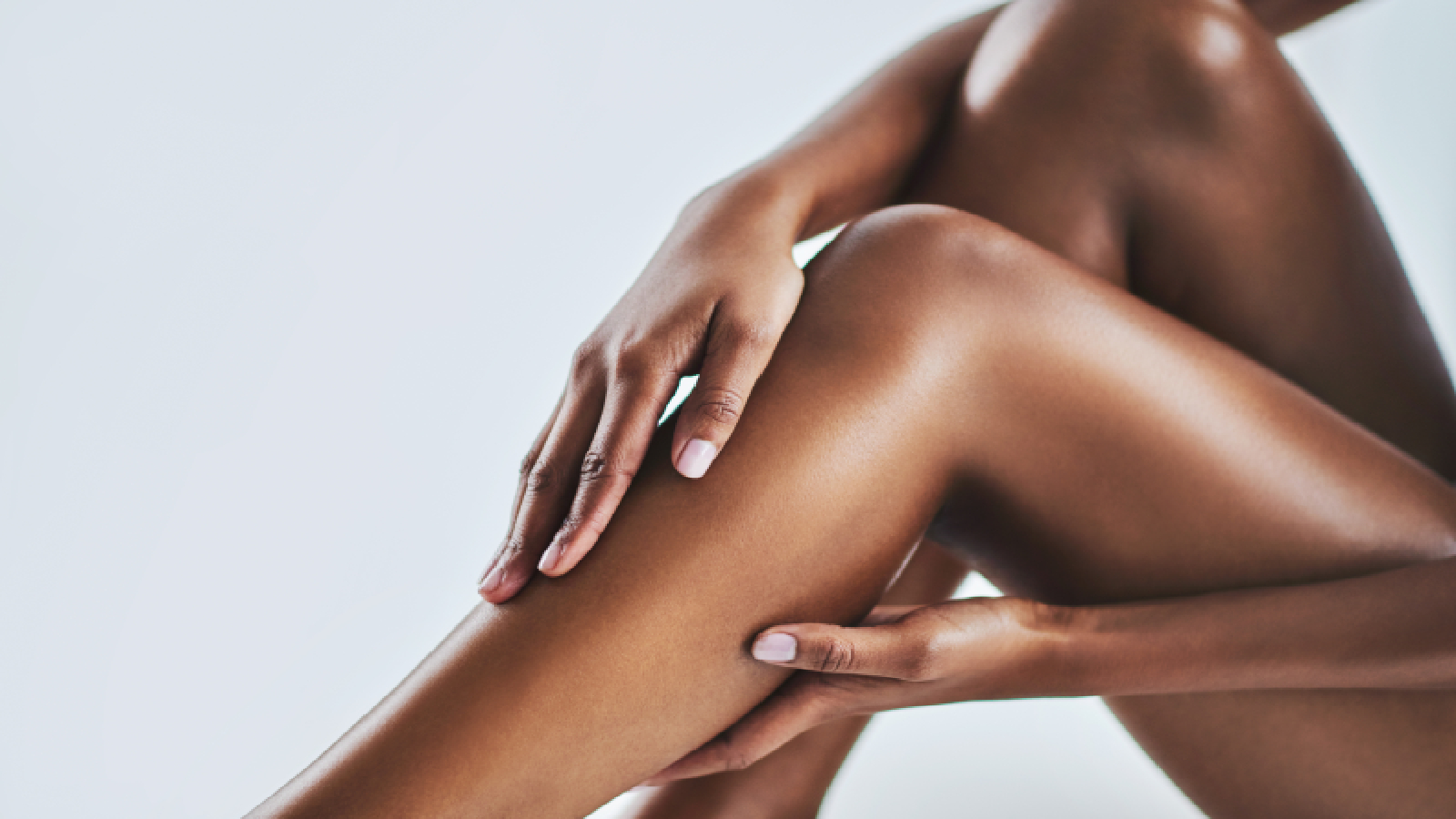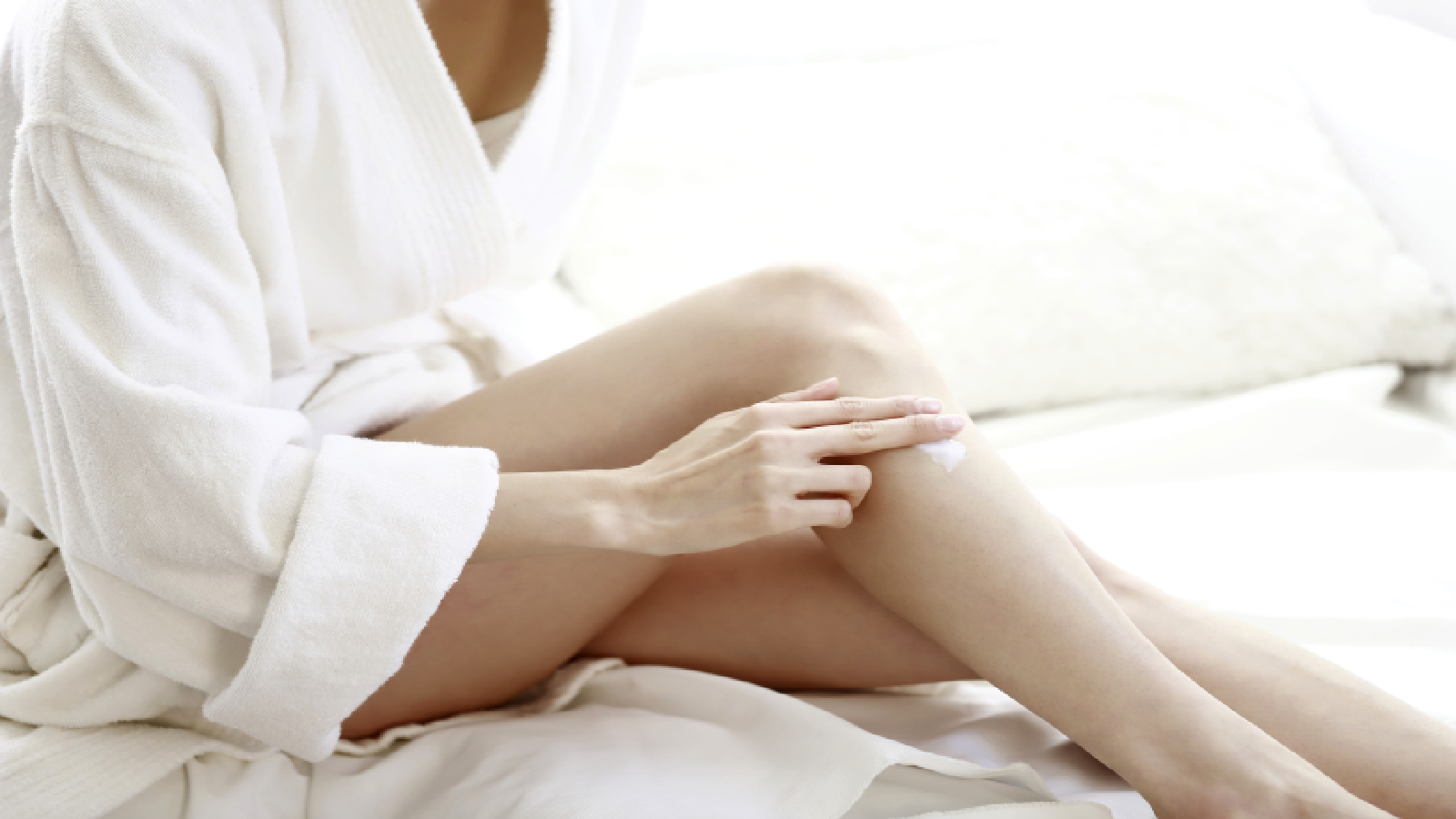How does Nair work (and can it damage your skin)?
Exactly how does Nair work? As hair removal goes, depilatory creams are among the least understood


Faced with a display wall of hair removal products, the question "how does Nair work?" may well come up. Can it compare with a razor, epilator or pot of wax, for example? How long do the results last?
Getting silky-smooth legs or a tackling a hairy bikini line without sharp objects, lasers, or any sort of plucking apparatus sounds pretty ideal, after all. And this is what makes depilatory creams, such as Nair, intriguing. But how does Nair work, exactly, and are these products actually that safe to use on our skin?
You may know that the best razors for women work by cutting down hair close to your skin, tweezers are designed to literally uproot pesky hairs, and laser hair removal kills off future growth at the follicle. But rather than swipe, pull or zap, Nair and other hair removal creams work by essentially dissolving the hair proteins.
It's a method that can be highly effective but know this—if you’re not careful, you might get (chemically) burned. We spoke to several skincare experts to understand the science behind how Nair works, as well as get their top safety tips to remove hair safely for smooth skin, without causing ourselves any damage.
How does Nair work? Here’s what happens when you use hair removal cream
According to Dr. Monica Michel, founder of SOMA MD, hair removal creams like Nair can indeed be a viable solution for eliminating unwanted body hair temporarily. “Known as depilatory creams, they work by breaking down the keratin structure of the hair, effectively dissolving the base of the hair to the point that they can be broken off when the cream is wiped away,” Dr. Michel explains.
If you peek at the back of the bottle, you’ll get an idea of how Nair works—it's packed with active ingredients that essentially eat right through hair proteins. That’s why unwanted hair seems to just melt away when you wipe off a patch of depilatory cream from your skin.
“Hair removal creams contain thioglycolic acid and bases of calcium and sodium as active ingredients,” says Dr Ahmad Fayyaz Chaudhry, a collaborating dermatologist for Scandinavian Biolabs. “Once applied, they can dissolve the hair protein and hair can be removed easily.”
Sign up for the woman&home newsletter
Sign up to our free daily email for the latest royal and entertainment news, interesting opinion, expert advice on styling and beauty trends, and no-nonsense guides to the health and wellness questions you want answered.
But what of these ingredients? They must be strong if they can break down and dissolve hair structure. According to the National Institutes of Health, thioglycolic acid is a corrosive, skull-and-crossbones chemical you definitely don’t want in your eyes, lungs, or stomach. So, it’s a pretty powerful ingredient, albeit one that meets safety standards for hair removal products and treatments that use it.

Interestingly enough, thioglycolic acid is also used in perm wave products. In that context, the acid breaks down the existing hair structure just enough to prime your tresses for new curl-creating chemical bonds. (If you’ve ever heard of an acid perm, now you know why it's called that!)
The difference between a perm and a depilatory cream is that in the latter, when thioglycolic acid gets to work, it doesn’t hold back. Ask Dr Erum N Ilyas of AmberNoon and Schweiger Dermatology how Nair works, and she'll tell you the following, “Depilatory creams work to dissolve the hair follicles by breaking apart the sulfur bonds that hold the hair together.”
Once the sulfur bonds and hair proteins are dissolved, all you need to do is wipe everything away. Many depilatory creams also contain moisturizing and exfoliating ingredients, so you’re left with incredibly smooth skin afterward—no prickly patches or razor burn in sight.
Using depilatory creams safely—the dos and don’ts
Now you have a clearer understanding of hair removal creams and how Nair works, you'll appreciate the importance of the first step before using them.
“Test the cream once on a small patch of skin, as it can initiate allergic reactions and chemical burns in sensitive skin,” says Dr Chaudhry. “In case of any reaction, contact a health care practitioner as soon as possible.”
The Nair brand recommends beginning with a patch test even if you’ve used that product successfully before. Your skin’s composition and hormonal balance frequently change, meaning you could react differently each time you use it.
Given the nature of the active ingredients in depilatory creams, it's also wise to avoid using this hair removal method on skin with cuts or abrasions. “Be sure to follow the instructions exactly as listed, especially when using the product on more sensitive areas,” advises Dr. Michel.
For instance, if you don’t pay attention to the timing guidelines, or you use a product designed for body hair on your upper lip, there’s a high chance you’ll experience adverse reactions.
Depilatory creams aren’t like other products that might have some wiggle room when it comes to timing instructions. You might be okay to leave a mild foot mask on a little longer to make sure those rough patches are taken care of, but you can’t be so casual with corrosive creams.
“The risk with these products is that they cannot discern between hair and skin,” explains Dr. Ilyas. “If they are left on too long or on sensitive skin areas, then irritant contact dermatitis can develop.”
They’re formulated to dissolve the hair within the recommended time. If one spot isn’t completely rid of hair, Nair says you’re safe to give it another try—but only after 72 hours.
Always wash your hands after applying and removing a depilatory cream—it’s clear this is not a product you want to be left on your palms or transferred to your eyes, mouth, and tresses.
Now you have the answer to “how does Nair work?” you know it's a powerful tool in your hair removal toolkit, so it won't surprise you to hear this next piece of advice from Dr. Chaudhry. “The alkaline chemicals in depilatory creams can be hazardous if applied to genital skin and skin around body orifices.”
Meaning, if you’re using Nair around your bikini line, choose a product that’s specifically designed for use on that area. Don’t massage it into the skin and always err on the side of caution by starting with a patch test and keeping the product away from the most sensitive areas.
According to Nair, if you recently shaved or used a hair removal cream, it’s best to wait 72 hours before applying the cream to that same area. Better to be safe and heed caution.
The brand also advises waiting a full 24 hours between applying self-tanner, perfume, antiperspirant, or other products that could cause irritation. The next day though, you’ll be good to go. When you can apply products again, you may want to use a moiturizer for dry skin for extra hydration.
woman&home thanks Dr. Monica Michel of SOMA MD, Dr. Ahmad Fayyaz Chaudhry of Scandinavian Biolabs, and Dr. Erum N. Ilyas of AmberNoon and Schweiger Dermatology for their time and expertise.
A lifelong creative writer and beautyphile, Eunice Lucero-Lee graduated from De La Salle University in 2002 and was hired a year later to front all beauty coverage for Pink Magazine. A beauty, astrology, and pop culture obsessive and insider for over 18 years, Eunice is an internationally published editor (and now certified astrologer) whose work has been featured in publications such as Cosmopolitan, Esquire, and The Numinous, among many others.